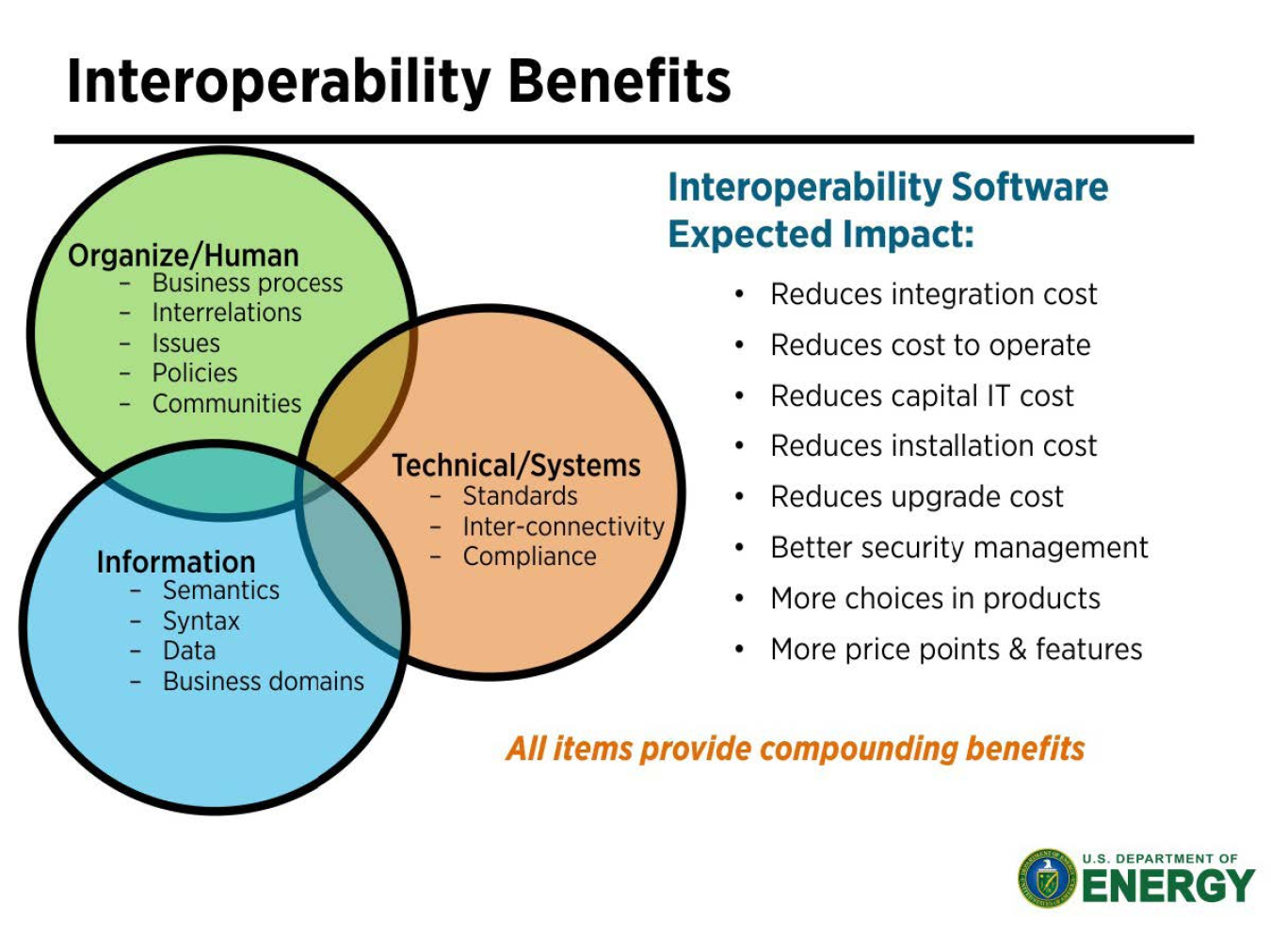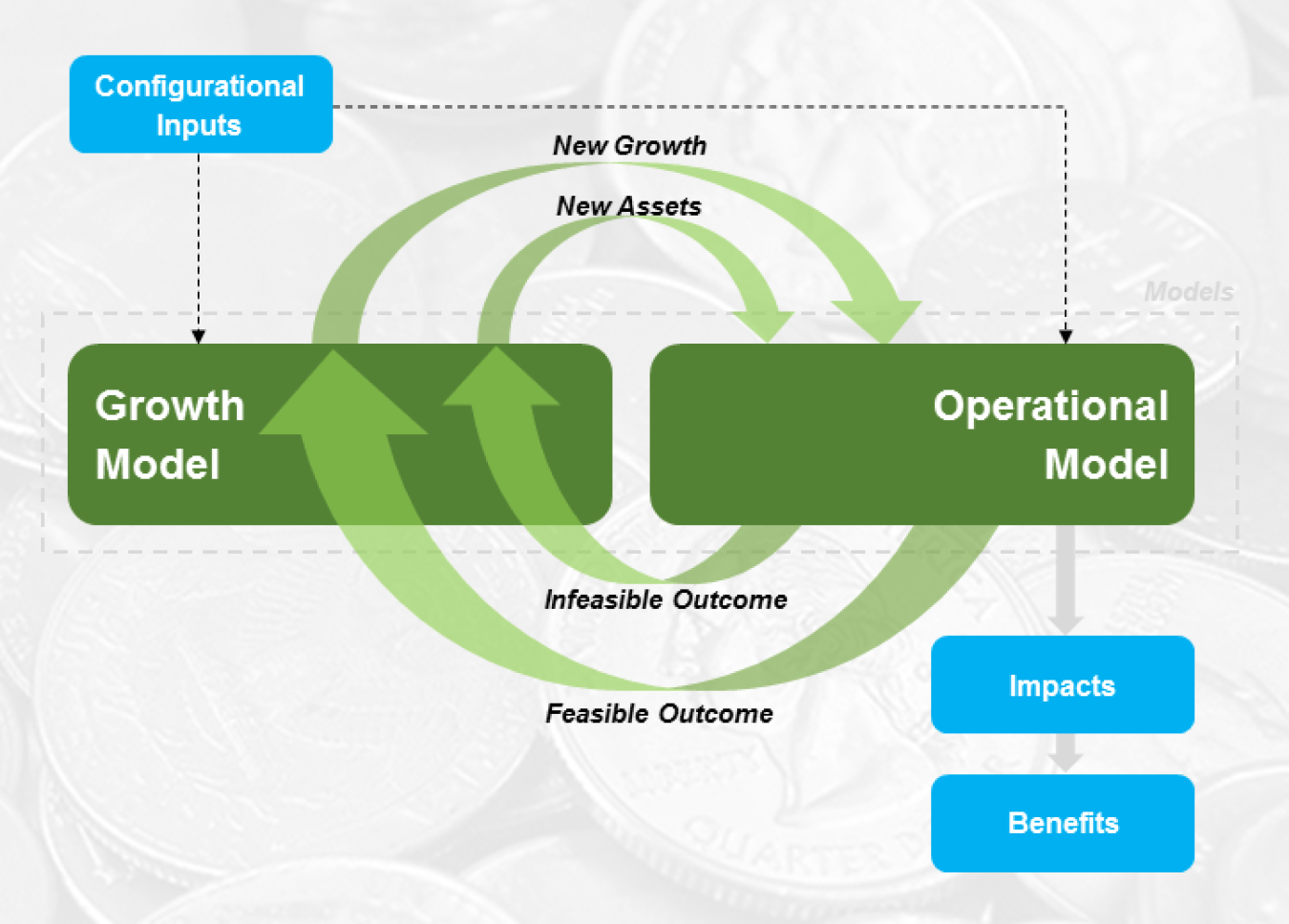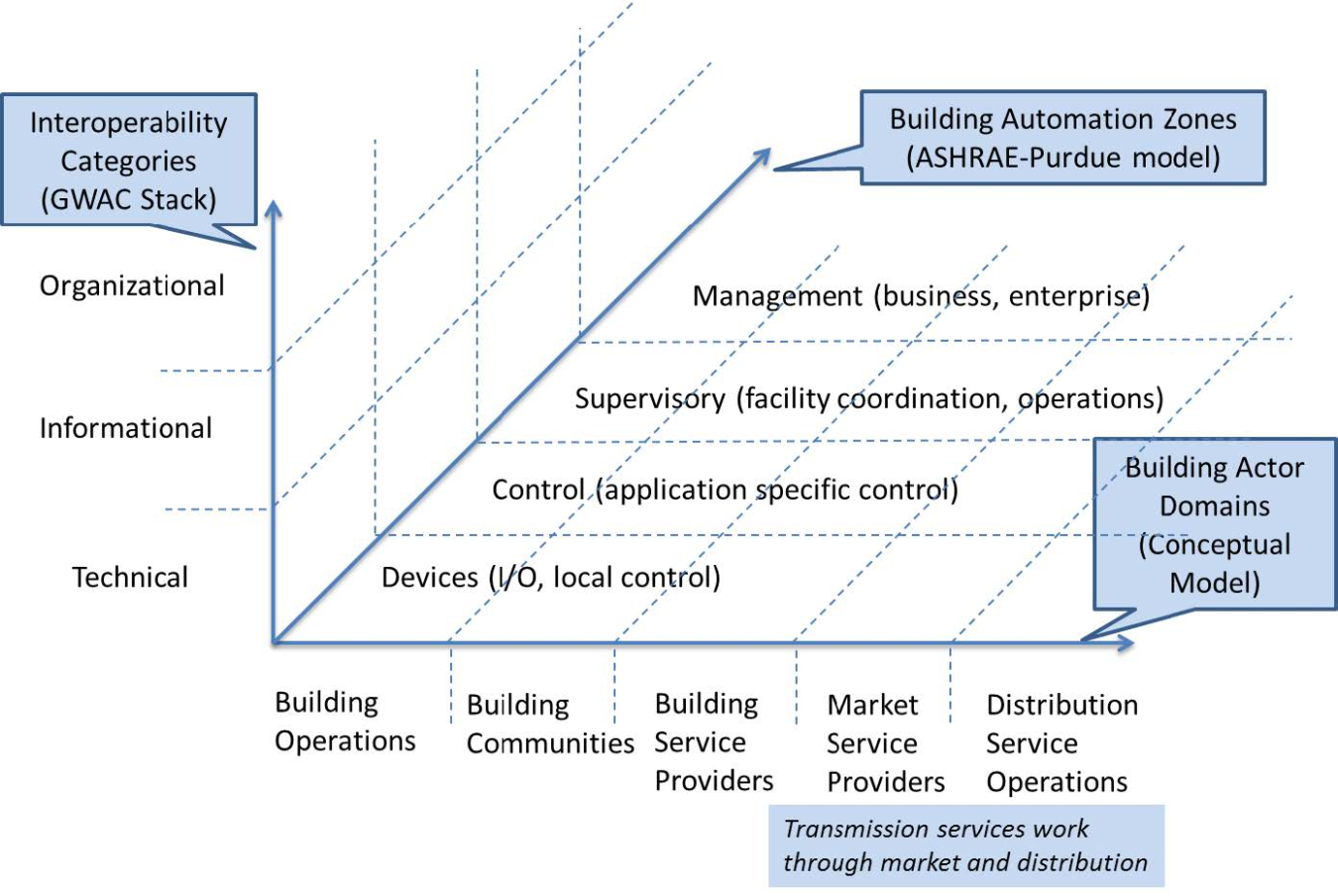The Brief
- DOE’s Buildings-to-Grid Program is coordinating strategies and activities with stakeholders to integrate and optimize homes and commercial buildings with the nation's energy grid amid a rapidly changing energy landscape.
- DOE recently published three reports, which touch upon (1) the current buildings interoperability landscape, (2) the significant opportunity that interoperability presents for the country, and policy options for ensuring a holistic approach, and (3) a framework for defining value within a connected, interoperable buildings-to-grid ecosystem.
- What is interoperability? Interoperability is the ability to exchange actionable information between two or more systems within a home or building, or across multiple buildings and the grid. If implemented on a national scale, its benefits could be enormous.
......................................................................................
Advances in connected equipment and buildings are making a daily occurrence out of the once seemingly impossible: you say a command, your lights turn on; you look at your phone, it lets you know you’ve run out of milk; you walk in the door, the thermostat has already adjusted to your ideal temperature. These technologies are being used to make buildings more intelligent—giving people access to new information that makes their lives easier, and in some cases giving them benefits, like lower utility bills or improved comfort, without making them do any work at all. But what if our buildings could do more? What if they were both smart enough to “talk” to each other, and empowered to seek out and consummate beneficial opportunities to trade energy services?
A vision is emerging of a connected world in which building equipment and systems coordinate to efficiently meet owners’ and occupants’ needs, and where buildings regularly transact with other buildings in ways that benefit our entire energy system. Realizing this vision, however, will require a holistic approach to integrating new technologies into the grid—one that ensures that buildings and building systems and equipment can seamlessly share information and coordinate their activities through value-driven transactions.
Interoperability — A Gateway to the Future
Interoperability—the ability of two or more systems to exchange actionable information—is key to making this vision a reality. It requires that all systems involved in the transaction can reliably and securely exchange information, as well as understand what the exchanged information means.
Take this example: a building is generating excess electricity through its rooftop solar panels, while another is expecting an influx of people and needs more power to operate its air conditioning systems. If these buildings could talk, the second could transact with the first to obtain the energy it needs, the first could be compensated for the energy it produces, and the grid could profit by not having to bring a coal-fired power plant online to meet additional demand.
The technology needed to support the requisite equipment and system interactions has been demonstrated under various conditions, and DOE, partly through its Grid Modernization Lab Consortium, is further developing these technologies. Work remains, however, to develop and implement a communications and operations framework that can easily and affordably enable this highly complex level of coordination at scale, and between diverse building equipment and systems all across the grid.
The State of the Market and the National Opportunity
DOE’s Buildings Interoperability Landscape report provides an overview of existing government and industry efforts around interoperability, including existing and emerging state-of-the-art concepts for integrating connected equipment. It lays out the foundation of a shared vision for the future, highlighting potential goals and attributes to include in an upcoming interoperability roadmap. DOE intends to engage stakeholders from a variety of industries in developing this roadmap—aligning the community on a pathway to achieve our shared interoperability objectives.
In another report, The National Opportunity for Interoperability and its Benefits for a Reliable, Robust, and Future Grid Realized through Buildings, DOE expands on this topic, focusing on the massive benefits that interoperability can bring to the grid, the economy, and everyday people. It also gives policy options for government entities to support an interoperable future.
Assigning Value to Transactive Energy
In a separate, related report, Valuation of Transactive Systems, DOE builds on the concept of interoperability by considering not only how to realize an interoperable future, but how to value the transactions that interoperability enables. Developing an appropriate valuation of building-to-building and building-to-grid transactions is critical for interoperability to succeed on a national scale: how can equipment or building systems know to exploit value opportunities if there is no clearly defined “value” for that response?
“It’s tricky to apply valuation to systems that use [transactive energy],” says Don Hammerstrom, a Pacific Northwest National Laboratory scientist and one of the report’s authors. “[Transactive systems] facilitate the exchange of value—they do not necessarily create new value streams.” The report begins to address this challenge by investigating an appropriate structure for economic incentives that can prioritize and guide the interactions of connected systems and equipment—a framework known as “transactive energy.”
Peering into the Future
Just imagine some of the opportunities of a fully integrated, buildings-to-grid ecosystem—one that fully harnesses the growing connectivity of equipment and buildings:
- Buildings can serve as low-cost, energy storage options for the electric grid, helping to balance the peaks and valleys of electricity demand.
- Building owners, operators, and tenants can pursue new cash-flow opportunities from increased energy savings, efficiency gains, and transactive energy commerce.
- New markets can emerge for energy management technologies and services, contributing to economic development, job creation, and American technological leadership.
Creating a common understanding of interoperability and transactive energy valuation will be critical to scaling not only energy efficiency technologies, but also our nation's entire clean energy system.



